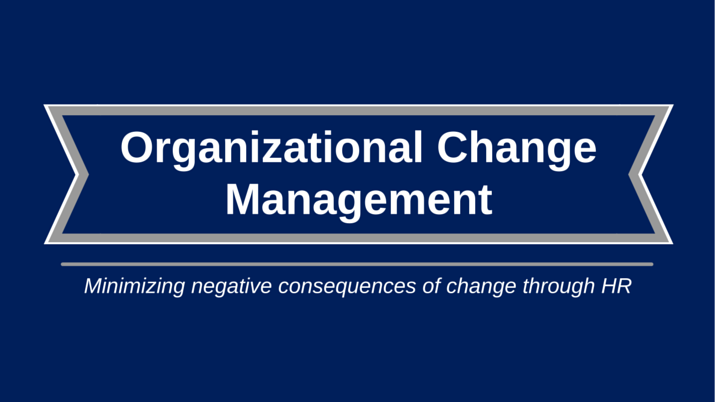Organizational Change Management in HR

Last Updated January 2, 2015
With a great potential for fast change in modern business, as technologies improve and customer demands change, managers must occasionally make the difficult decision to restructure. For employees of an organization that may be at-ease with their work lives and job responsibilities, change can often be seen as a negative process. Fortunately, Human Resources (HR) professionals can implement change management techniques to minimize the negative consequences of change and ensure a smooth transition to a new work environment.
What Is Change Management?
Whenever an organization changes anything significant, it faces a significant period of transition as workers and managers adjust to their new responsibilities or work environments. Change management is a system of planning, analysis and execution that attempts to minimize both short- and long-term disruption to make the transition as seamless as possible.
HR professionals facilitate change management in two principal ways: 1) ensuring that general change objectives are met by participating in the planning and execution stages with other managers; and 2) using their familiarity with the organization’s employees to understand their needs and expectations during a change. In many organizations, an HR professional is the key link between structural change managers and the employees who will be most affected by the change.
Benefits of Change Management
Change management helps organizations mitigate the negative effects of significant organizational change. The degree to which these negative effects are experienced depends on whether the change is at a small or large scale. Change can impact the workflows of workers, reduce morale, diminish product quality or lead to customer loss if not carefully considered. As an HR professional, a key responsibility is assessing the human impact of change and finding ways to encourage a smooth transition to new job responsibilities.
Developing a Change Management Plan
The first step in developing a change management strategy is to create a diagram that details the position descriptions and responsibilities for workers at all levels of a company. This is done so that managers have the most up-to-date information possible on the types of workers employed, their current duties and the degree to which these duties can be comfortably modified. This process is usually executed as a collaborative effort between project leaders and HR and tends to take the format of several small group meetings over a period of time.
The next phase involves analyzing current employee responsibilities and identifying how current employees can be successfully transitioned to the new organizational structure. In this phase, HR is responsible for meeting with employees and other members of the change management team to assess how well employees could adjust to new job duties. If current employees lack the skills or expertise needed to transition into a new position, this phase would also involve recruitment efforts for new talent.
In the third phase, HR professionals create an overall summary of the positions that will be strongly affected by the change, positions that will be somewhat affected and positions that should not be affected. This is done in the context of the new organizational structure, current employee skills and responsibilities and whether or not any new employees will need to be hired. The purpose of this overall process summary is to allow managers to more clearly understand how proposed changes will affect the employee makeup of the organization.





